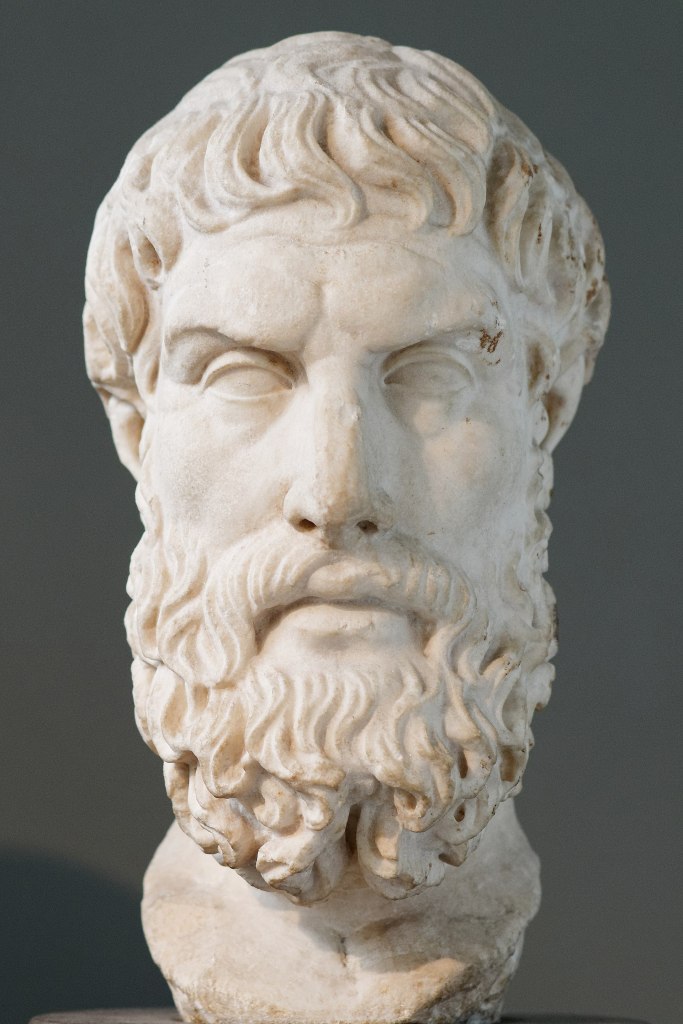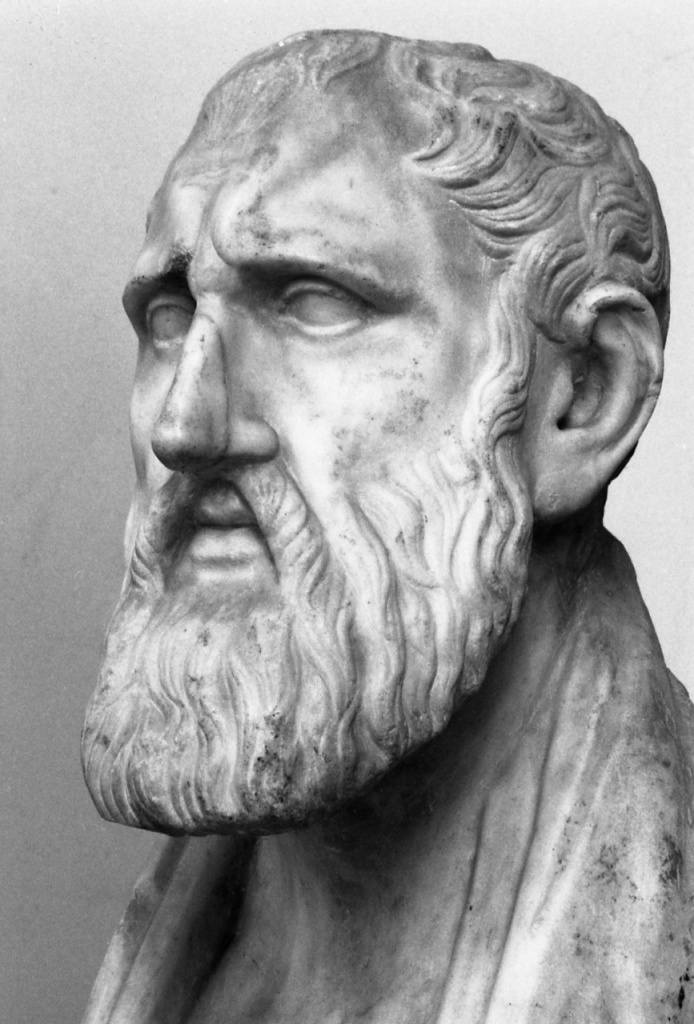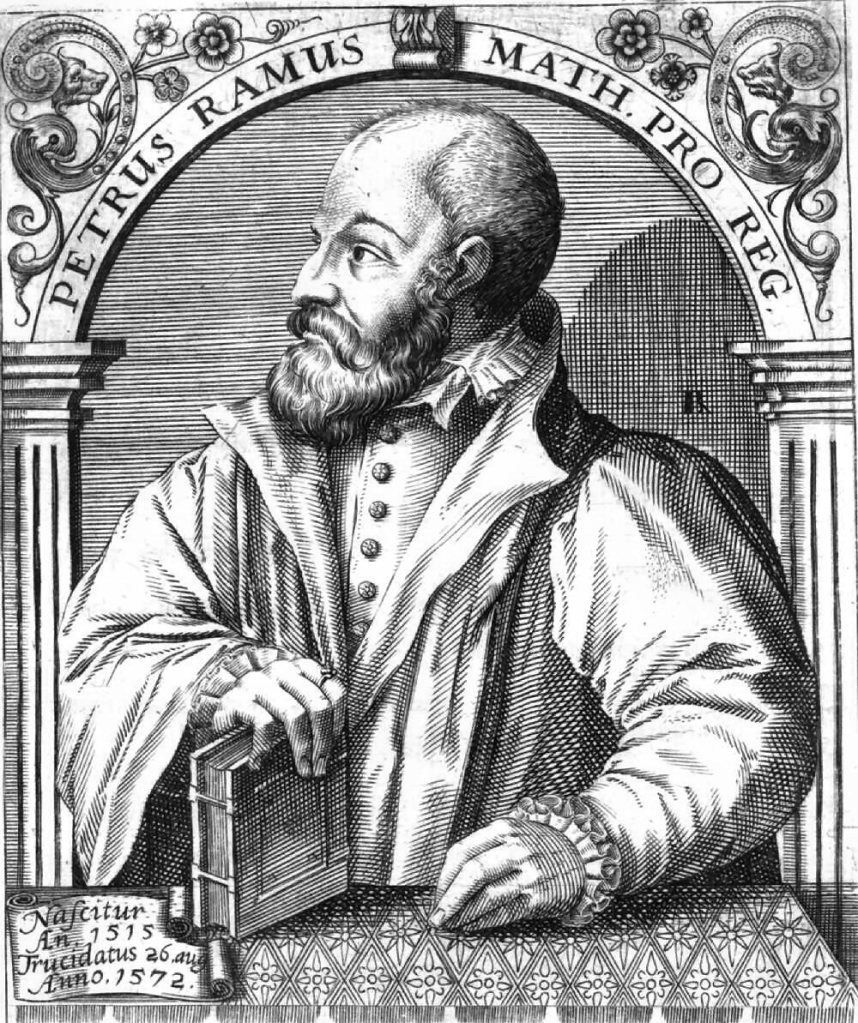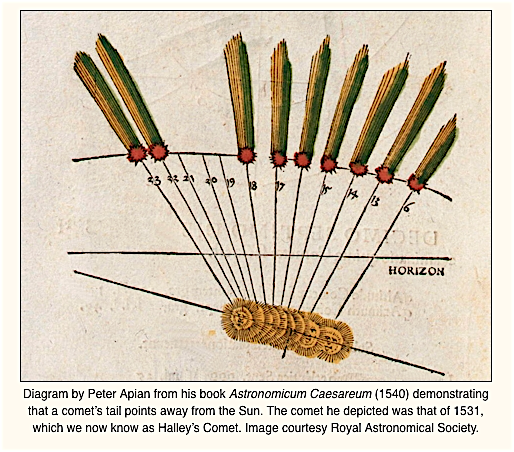The so-called scientific revolution in the seventeenth century is often characterised as throwing off the yoke of Aristotelian philosophy that had held the scholastic medieval university in a strangle hold since Albertus Magnus (c. 1200–1280) had made it compatible with Catholic doctrine in the thirteenth century. In reality rather than being thrown off, on the one hand the Aristotelian philosophy itself evolved to some extent over the centuries, as Edward Grant put it, medieval Aristotelian philosophy was not Aristotle’s philosophy and it changed over time. On the other, it was slowly undermined from various different directions by other ways of doing things in various areas of knowledge acquisition. To some extent much of the content of the previous episodes in this series have sketched that process of undermining, in areas such as cartography, medicine, botany, zoology, mineralogy, geology, and palaeontology.
Because of the dominance of Aristotelian philosophy on the European medieval university people tend to forget that it was only one of the schools of philosophy that grew up and flourished in Ancient Greece and that in particular Aristotle’s concept as to what constitutes episteme or scientia, that is knowledge, was by no means the only game in town. We have already seen how the non-philosophical concept of knowledge produced mathematical that was propagated by Archimedes in the third century BCE came to replace Aristotle’s rejection of mathematically produced knowledge.
The most obvious competing Ancient Greek philosophy is that of Plato, Aristotle’s teacher. They shared a common cosmology, Aristotle having taken that of his teacher and elaborated it, but in other areas their views diverged substantially. Plato was much more sympathetic to mathematics that his pupil, some even labelling him a Pythagorean for his geometrical view of the world. On the whole I think Neo-Platonism had less influence on the development of modern science in the Early Modern Period than is usually attributed to it. However, much of Kepler’s work had a distinctly Platonic flavour and Neo-Platonism was a major factor in the development of the occult sciences during the Renaissance, which did much to rock the Aristotelian boat.
Another well-known competitor to Aristotle in Ancient Greece was Atomism, a philosophical movement about whose fundamental tenants Aristotle was exceedingly rude. Atomism did come to play a major role in the evolution of modern science in the seventeenth century, but less so during the period of Renaissance science that I defined for this series, ending in 1648. Atomism was initially rejected in the Early Modern Period by mainstream thinkers because the Epicurean atomism that began to re-emerge then contained at its core a belief that the cosmos was eternal, without a beginning. This, of course, contradicted the Church doctrine of the Creation and so was distinctly heretical. Even worse, Epicure was also considered to be an atheist and atomism an atheistic theory.

Several thinkers, including both Thomas Harriot (c. 1560–1621) and Galileo (1564–1642), came under suspicion for holding atomistic views. However, just as Albertus Magnus had made Aristotelianism compatible with Christian doctrine in the thirteenth century, Pierre Gassendi (1592–1655) made Atomism compatible with it in the middle of the seventeenth century, when it had been taken up by thinkers such as Isaac Beeckman (1588–1637) and René Descartes (1596–1650). Interestingly, the centuries most prominent and influential atomist, Robert Boyle (1627–1691), took his atomism not from Epicure, but from the Germany alchemist Daniel Sennert (1572–1637), who in turn had taken it from the late thirteenth and early fourteenth century alchemical work of the Pseudo-Geber, Paul of Taranto .
Another competitor to Aristotle was Stoicism founded by Zeno of Citium in the early third century BCE. Today, most people automatically think of an ethical philosophy when they confront to terms Stoic or Stoicism, and they are not wrong in doing so, the emphasis in Stoicism being living a life of virtue. However, Stoicism also had theories of scientia and cosmology that differed substantially from those of Aristotle and would come to have a major influence in the sixteenth century during a revival of Stoicism in Europe.

For Aristotle the cosmos was a finite sphere with the Earth at the centre, but his sphere was divided into two, the dividing line being the orbit of the Moon. Everything supralunar consisted of the fifth element, the quintessence, was eternal, perfect, and unchanging. The planets were carried around their orbits on celestial spheres. Everything sublunar was constituted from the four elements–water, earth, air, fire–was imperfect and subject to change and decay.
The Stoics had a very different take. Their cosmos was, like that of Aristotle, also a finite sphere but there the similarity ends. Their cosmos was filled with pneuma:
In Stoic philosophy, pneuma (variously rendered ignis, aer, or spiritus in Latin) is the concept of the “breath of life,” a mixture of the elements air (in motion) and fire (as warmth). For the Stoics, pneuma is the active, generative principle that organizes both the individual and the cosmos. In its highest form, pneuma constitutes the human soul (psychê), which is a fragment of the pneuma that is the soul of God. As a force that structures, it exists even in inanimate objects.
Wikipedia
As the whole cosmos is filled with pneuma there is, in the Stoic cosmos, no difference between the supralunar and sublunar regions, it is all one. There are also no spheres to carry the planets, which swim through the heavens driven by the dynamic characteristic of pneuma. Whereas in Aristotelian cosmology, comets, which are definitely not eternal, perfect, and unchanging, are sublunar atmospheric phenomena. For the Stoics, however, comets are clearly supralunar, celestial phenomena. These major differences in the two cosmologies would come to play a significant role in the evolution of cosmology/astronomy in the sixteenth century.
One figure in the sixteenth century, who launched an all-out critique of Aristotle was the French Huguenot, Peter Ramus (1515–1572).

Unlike others, Ramus did not try to replace Aristotle with another, different ancient philosophy, but set out to reform, what he saw as corrupted Aristotelian philosophy. He radically simplified both Aristotelian logic and rhetoric and reordered them into what he saw as a correct system. Unlike other humanists, he also heavily criticised Cicero. Ramus was also a big supporter of mathematics, which he saw as having been somehow perverted by Plato and Aristotle. Although not a mathematician he presented what he saw as a purified mathematics. However, unlike the modern Archimedeans he didn’t develop a mathematics based natural philosophy. He came under heavy attack from other academics but following his death there grew up, what one could call, a cult of Ramism, throughout Europe. Both Rudolph (1546–1613) and Willebrord Snel (1580–1626), who played a leading role in the development of the mathematical sciences in the Netherlands were Ramists. François Viète (1540–1603), who played a significant role in the transition of algebra from commercial arithmetic to a proper mathematical discipline was also influenced by Ramus.
I started talking about Stoic cosmology and seemed to veer off in a different direction to Ramus but there is a connection. Jean Pena (1528 or 1530–1558 or 1568), another French Huguenot, was appointed professor of mathematics at the Collège Royal in Paris, where he had earlier worked under Ramus (who was regius professor for philosophy and eloquence) as one of a small circle of students producing new translations of classical authors in science and mathematics. Following Ramus’ lead Pena developed an anti-Aristotelian standpoint in his own work but unlike his teacher, rather than simplifying and rationalising Aristotle he replaced some of the Aristotelian doctrines with ones from the optical tradition and from Stoicism.
Pena’s knowledge of Stoicism probably came from the works of Cicero, Seneca, and Pliny the Elder, all authors favoured by the humanists, and of Stoic cosmology from the works of Origen and Plutarch. In the preface to his De usu Optices (a new translation of Euclid’s Optics published in 1555), when discussing atmospheric refraction, Pena posits that the whole of space is filled with animabilis spiritum, a phrase used by Cicero in an exposition of Stoic cosmology, from the surface of the Earth to the fixed stars. His space has no celestial spheres and the planets swim through space. Inspired by the discovery of Peter Apian that the tails of comets always point away from the Sun, Pena hypothesised that comets were supralunar lenes that focused the sunlight.

Christoph Rothman (c. 1555–1601), the chief astronomer of Landgrave Wilhelm IV of Hessen-Kassel, wrote a report on the comet from 1558, Scriptum de cometa, qui anni Christi 1585 mensib. Octobri et Novembri apparuit, which included much of Pena’s theories of the cosmos and of comets. This book was first published in 1618 by Willebrord Snel, but Rothmann sent a copy of the manuscript to Tycho Brahe (1546–1601) in 1586. It was this text that most likely convinced Tycho to abandon the Aristotelian cosmological theory of the celestial spheres, also adopting a Stoic theory on the nature of planetary motion.
According to Tycho Brahe, in a letter of February 1589, the substance of the heavens is a « most pure and most fluid aethereal substance » distinct from all the terrestrial elements. However, if a comparison must be made, the substance of the heavens is closest to fire, as Paracelsus teaches, although it is a fire that burns without being consumed. For Tycho Brahe stars and planets are formed from this substance. Consequently, just as birds made from the mumia of air live in the air, and fish made from the mumia of water move in the waters, for the same reason it is likely that the Sun and stars, which are made of a kind of unburning fire, carry out their revolutions in the aether which is fiery and unburning.1
Whilst proposing a different form of planetary motion, a force emanating from the Sun, Johannes Kepler (1571–1630) maintained the continuous fluid heaven of Pena, Rothmann, and Brahe. It is interesting to note the Roberto Bellermino (1542–1621), the Jesuit inquisitor, who taught astronomy in his younger days, was also a proponent of the fluid heavens theory.
The medieval dominance of Aristotelian philosophy was not blasted away in one go by a single alternative but was slowly chipped away by diverse other models, Archimedean, Platonism, Atomism, and Stoicism in various areas of scientia, as outlined here. In some areas Aristotle continued to hold sway even into the eighteenth century. As I like to point out, Newton’s Principia (1687) is a perfect model of Aristotelian episteme, a set of evidently true axioms from which empirically true facts are deduced by formal logic. However, by the middle of the seventeenth century the fields of scientific enquiry had changed substantially from what they had been in around fourteen hundred.
1 Quoted from Peter Barker, Stoic alternatives to Aristotelian cosmology: Pena, Rothmann and Brahe, Revue D’ Histoire Des Sciences, 2008/2 (Tome 61) pp. 265–286. Barker’s essay informs most of the Stoicism content of this blog post.